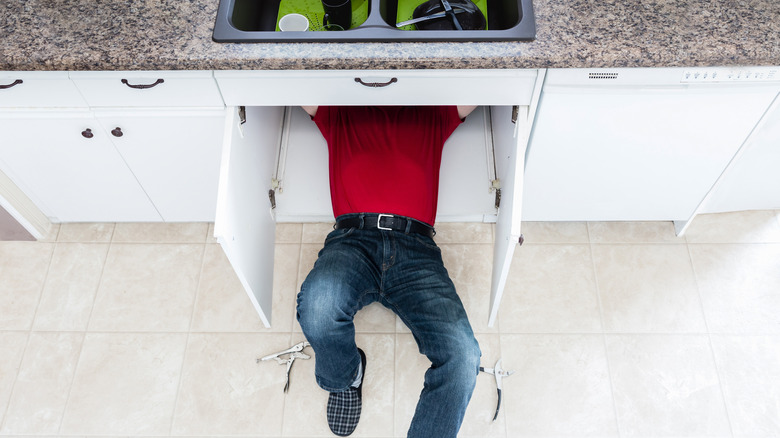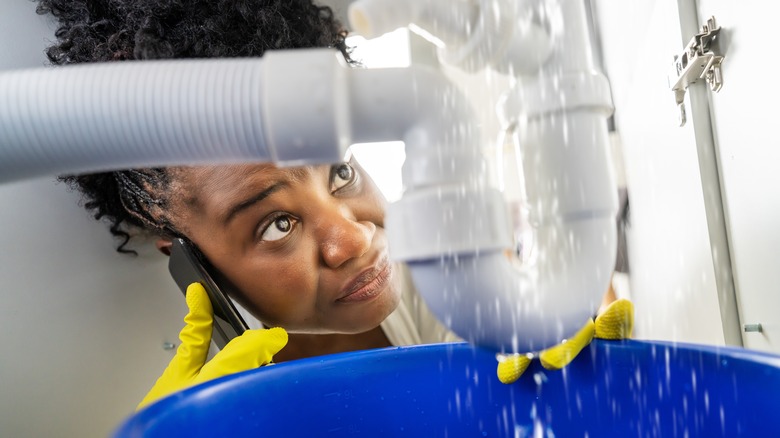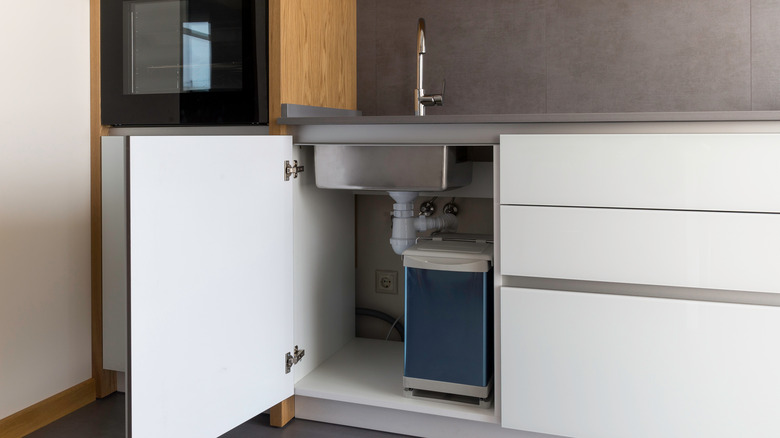Don't Make This Dangerous Mistake When Defrosting Your Frozen Pipes
When the winter chill is in the air, something that can easily be overlooked is the safety precaution around your pipes. When ambient temperatures drop, uninsulated pipes, especially those exposed to cold air, lose heat. As the water temperature decreases, it nears its freezing point, and if conditions persist, the water solidifies, expanding and putting immense pressure on the pipe walls (and potentially your wallet). This pressure can lead to pipe bursts, causing significant damage. Additionally, stagnant water in pipes is more prone to freezing than flowing water, making sections with restricted flow susceptible. Nevertheless, frozen pipes can present homeowners with tough decisions, but one method that can actually cause even more danger is using an unsupervised space heater.
Using a space heater to defrost pipes is dangerous due to the potential fire hazards associated with the combination of heat, electrical elements, and proximity to flammable materials. Space heaters, while great sources of heat for small areas, can ignite nearby objects, insulation, or even the pipes themselves if they get too hot. Improper use or faulty equipment may also lead to electrical fires. The consequences of using a space heater for pipe defrosting include property damage, injuries, and the risk of a widespread fire. So while it may be tempting to just plug in the foot warmer from under your desk to heat your pipes back up, doing so puts you and your property at a greater risk. Instead, try alternatives that are much safer and that do not require constant supervision.
How to identify if your pipes are frozen
Homeowners, brace yourselves for the chilly reality — frozen pipes can sneak up on you. One telltale sign is when your faucets suddenly turn into reluctant performers, spouting nothing but a feeble trickle or, worse yet, complete silence. If you turn on the tap and hear a disturbing absence of the usual water rush, it might be a cold conspiracy within your pipes. Another subtle indicator is foul-smelling water. When pipes freeze, stagnant water can accumulate impurities and bacteria, resulting in unpleasant smells. The lack of movement and freezing temperatures create an environment where microorganisms thrive, causing water to develop an odor as it sits trapped in the confined, frozen space.
Peculiar noises in the dead of winter can also betray frozen pipes. Listen closely for unexpected groans, creaks, or even banging sounds emanating from your plumbing. These sounds could be your pipes protesting the cold, as freezing water within them expands and exerts pressure on the pipe walls. If you spot frost on visible pipes, especially those located in unheated areas like basements or crawl spaces, it's your pipes begging for warmth. External frost signals that the internal temperature is dropping dangerously low, potentially leading to a bursting pipe. Remember, vigilance is your ally in the battle against frozen pipes. The moment you notice any of these signs, consider taking action to thaw the pipes before they explode and cause expensive water and structural damage.
Safer methods of defrosting your pipes
A space heater can be effective in defrosting frozen pipes if you're willing to look after it while it's in use. If that seems impractical, there are other easy methods which do not require supervision. One effective way involves using hot water-soaked towels. Begin by soaking towels in hot water and wrapping them around the frozen section of the pipe. The heat from the towels gradually transfers to the pipe, promoting thawing. This method is safe, as it avoids the use of open flames or electrical appliances, minimizing the risk of accidents. It provides controlled and even warming, preventing rapid temperature changes that could lead to pipe damage or bursting. Regularly replace the towels with freshly soaked ones to maintain a consistent thawing process, and wipe any puddles or drips from the towels to avoid slipping or water damage.
Another safe approach is to raise the air temperature around the frozen pipes above 55 degrees Fahrenheit. Turn up the heat in your home and use fans to circulate warm air near the pipes. Opening cabinets that conceal pipes allows warm air to reach them more effectively. However, exercise caution to prevent potential water damage. Be aware of puddles forming around the pipes as the ice melts, and promptly address any water accumulation to avoid damage to your property. This method also ensures a gradual thaw, reducing the risk of sudden pressure changes within the pipes that could result in bursting and damage to your home.


